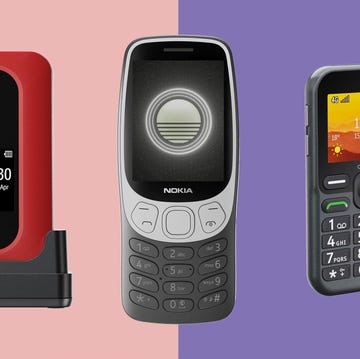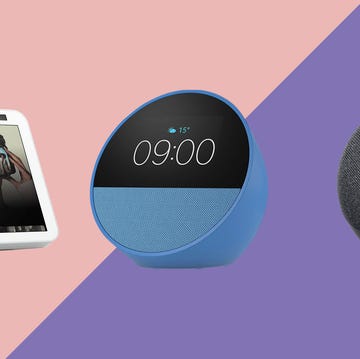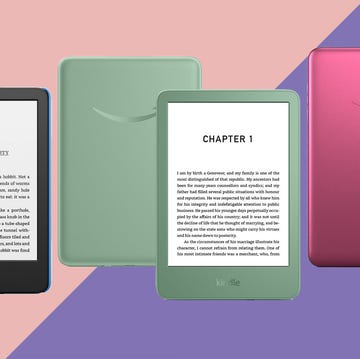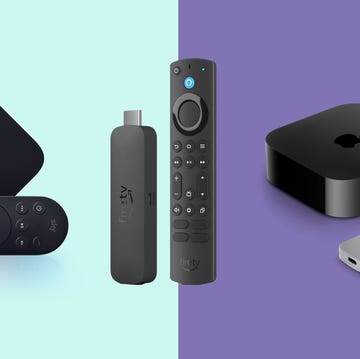We earn a commission for products purchased through some links in this article.
The best power banks so you never run out of battery on the move
Save your phone from exhaustion with a portable charger – our list also includes the best magnetic power banks for convenience

Ask any frequent flyer, and they'll tell you that one of their most essential gadgets is one of the best power banks – none of us ever want to be caught in a situation where our phone, headphones, iPad or speaker are running out of juice when we need them most.
These portable batteries are the best way to keep your devices fully charged when you’re on the go. But they’re not just for travellers; they're invaluable for all your recharging needs when you’re not near a plug.
Best power banks 2025

Best compact power bank with fast built-in USB-C
Anker Nano Power Bank with built-in USB-C cable
Read review




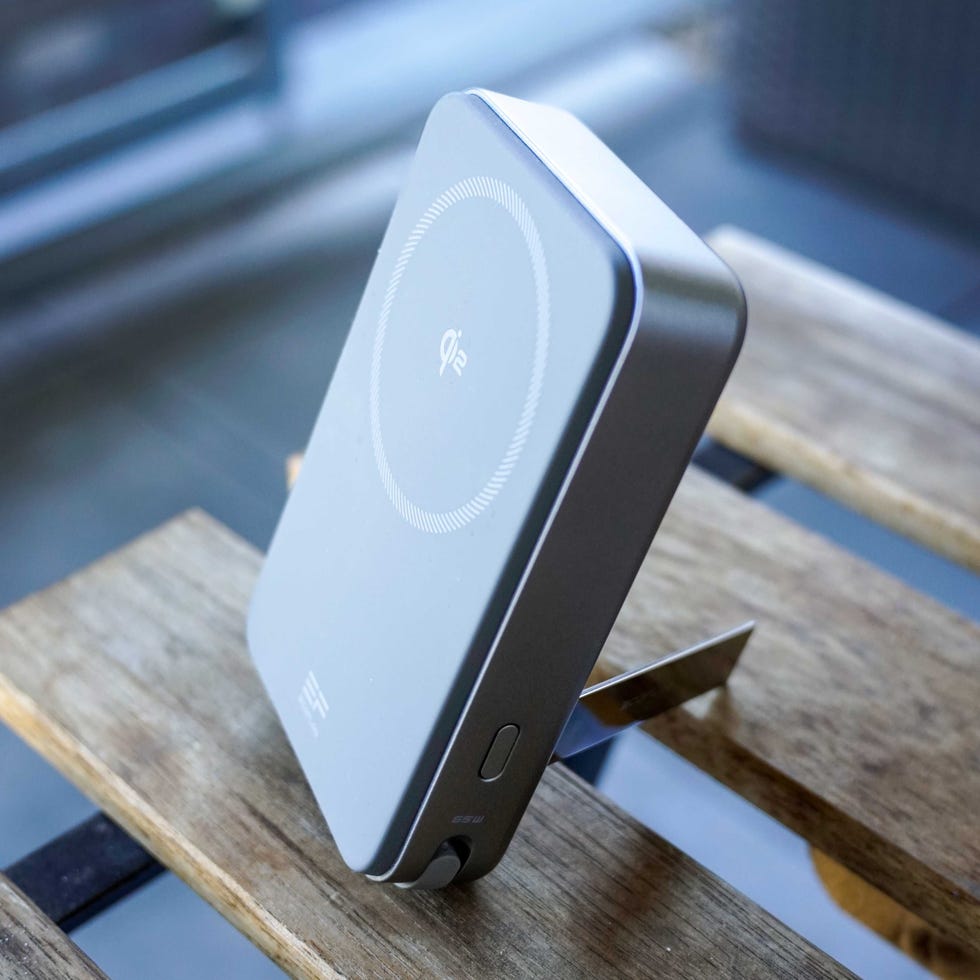
Best magnetic power bank for extra capacity and built-in USB-C cable
EcoFlow Rapid Magnetic Power Bank 10000mAh
Read review


Whether you’re after a bigger design with a lot of power to recharge your laptop, or a compact little battery to keep in your bag for emergencies, we’ve rounded up the best power banks below.
You’ll find hundreds of portable chargers online, so to help make sense of the market, we've focused on the most trusted charging brands. The picks in our list are all regarded as top options for durability and reliability – we used them all hands-on and assessed their charging speed, heat levels, size, weight and design.
Pros
Useful display
Great capacity and fast charging
Cons
No included pouch
This pocket powerhouse may well be the only power bank you need for refuelling almost all your gadgets, with a small, lightweight design that packs in far more than you’d expect. The 10,000mAh capacity is will give you two smartphone recharges and will also be enough to get a decent amount of juice back into your tablet, laptop or headphones.
The short, built-in USB-C cable is super convenient, as is the surprisingly fast 30W power output. We used this to keep our iPad running during our travels, and it couldn’t have been more handy. It's also solid and well built– we were initially concerned about the built-in cable getting damaged, but it’s reinforced and feels robust.
We also love that it’s got a little built-in colour display to show off the current battery percentage. It's a reliable way to keep an eye on the battery level when we’re recharging the power bank itself too – it’s much more informative than the light-up dot system. Overall, we’d struggle to come up with real downsides to this, although it’s a shame it doesn’t come with a storage pouch.
Key specifications
| Capacity | 10,000mAh |
|---|---|
| Size and weight | 10.4 x 5.23 x 2.6cm; 213g |
| Ports | Built-in USB-C cable, USB-A, USB-C |
| Wireless charging | No |
| Magnetic charging | No |
Pros
Massive capacity
Can charge three devices at once
Not too bulky for the capacity
Cons
Rival options can be much faster
If you want a large capacity without the high price of Anker’s Prime power bank range or its 737, we recommend looking at this model, which goes for about half the cost (if not even less). It gives you enough juice to deliver seven charges to an iPhone 8, and the ability to power three gadgets at once.
You miss out on super fast charging for laptops that you’ll get from pricer power banks, but the 15W available via the USB-C port here is enough to refuel an iPhone at a reasonable speed, which is all most of us need.
As well as that port, it includes two USB-A ports, so you could use this to charge up your phone, earbuds and Apple Watch all at the same time.
Key specifications
| Capacity | 20,000mAh |
|---|---|
| Size and weight | 15.34 x 2.16 x 8.62cm, 440g |
| Ports | USB-A x2, USB-C |
| Wireless charging | No |
| Magnetic charging | No |
Pros
Small and light
Built-in cable
Cons
Dots aren't precise
Others are faster
We haven't come across many power banks that are this light and pocketable but will also charge reasonably quickly, have a great capacity, and a built-in USB-C cable that you can store on the body of the charger itself. For those reasons, this budget-friendly Belkin is our new top pick for convenience and compact design.
It’s only 215g, making it about as light as a bag of coffee, and it's super easy to pop in your coat pocket for the day or slip into your bag. It’s good if you just want something that does all the basics without overcomplicating things with wireless charging or fancy screens. The capacity is also great, more than enough for keeping your phone recharged or saving your headphones as the power runs low.
With a maximum power output of 20W, it’s faster to charge than our previous compact power bank pick without being much weightier. It does lack a USB-A port, but the built-in cable and additional USB-C slot make it versatile enough to power up two devices at once.
In our testing, it reliably got the CMF Phone 2 Pro (which has a 5,000mAh battery) back to over 80% in 50 minutes, restoring half of the battery in just over 30 minutes.
Key specifications
| Capacity | 10,000mAh |
|---|---|
| Size and weight | 2.4 x 10.07 x 6.4cm, 215g |
| Ports | Built-in USB-C cable, USB-C |
| Wireless charging | No |
| Magnetic charging | No |
Pros
Large capacity
Recharges three devices at once
Cons
No USB-C port
At just about the biggest capacity you can take on a flight and boasting enough ports to recharge three devices at once, we think this big Anker power bank has to be the pick for a family trip where everyone’s phones need some juice and you're going to be away from the plug for a long time.
It’s ideal for camping or a road trip, for example. It has a 30W output, which makes it a decent option for charging up three phones in one go.
Another unique feature here is that it can recharge at double speed if you use both of the Micro-USB inputs at once, although it will still take over six hours to get your battery back to full this way, so it’s best done overnight.
The good news is that even if recharging takes a little time, this has a massive capacity – enough to fuel up the iPhone SE almost 10 times.
Key specifications
| Capacity | 26,800mAh |
|---|---|
| Size and weight | 18 x 8.1 x 2.2 cm; 494.42g |
| Ports | USB-A x3, Micro USB x2 |
| Wireless charging | No |
| Magnetic charging | No |
Pros
Slim and portable
Has a built-in USB-C cable
Cons
It’s a pricey option
If you’ve looked into one of the best portable power stations for backup power at home or while camping, you’ve probably heard of EcoFlow. The brand has recently branched out into portable chargers, and this compact “Rapid” model is impressive. It's slim and compact, yet still has a 5,000mAh capacity, Qi2-capable magnetic charging, a USB-C port and a built-in USB-C cable.
It’s highly portable and efficient, and it comes in three stylish colourways: silver, blue or black. We found the magnetic connection secure and reliable, and it's twice as fast as older magnetic options that were limited to slow 7.5W charging. Convenient as it is, though, wireless charging is still not as fast as using a wire, and the built-in cable means you don’t have to worry about remembering yours.
The cable is reinforced and tucks away into the bottom of the power bank. It offers very quick speeds, restoring 50% of our iPhone 16 Pro’s battery capacity in just over 28 minutes – that’s a reliable quick recharge if you’re on the go, and, at 180g, it won’t weigh you down while travelling.
Key specifications
| Capacity | 5,000mAh |
|---|---|
| Size and weight | 10.8 x 7 x 1.44cm; 180g |
| Ports | Built-in USB-C cable, USB-C |
| Wireless charging | Yes |
| Magnetic charging | Yes |
Pros
Super small size
Quick to charge
Cons
Not the biggest capacity
Just need a little battery top-up on the go? We recommend this little helper, especially because it has a built-in connector for your phone, which is perfect if you tend to forget your cables or just don’t have the space for a tangled mess.
For iPhone users, this is a great little power bank to pop into your work backpack for the day. It may not have enough capacity for a full phone recharge but it will restore some juice if you’re out for the evening and can’t get back to a mains charger in a hurry. It’s easy to use, and the simple flip-up connector charges more quickly than other convenient power banks that attach with magnets.
Don’t have an iPhone with a Lightning port and need an option with USB-C instead? You’re in luck – we also tested out the USB-C version of this power bank and it’s just as much of a lifesaver, with the added benefit that it can charge our earphones, Kindle, Bluetooth speaker and other gadgets.
Key specifications
| Capacity | 5,000mAh |
|---|---|
| Size and weight | 7.7 x 3.68 x 2.5cm, 98.5g |
| Ports | Lightning (also available with USB-C) |
| Wireless charging | No |
| Magnetic charging | No |
EcoFlow Rapid Magnetic Power Bank 10000mAh

Pros
Has magnetic charging, a built-in cable and a stand
App connectivity
Cons
Quite large to carry
Our new favourite feature-packed power bank, the larger EcoFlow Rapid model seemingly has it all – it offers wireless magnetic charging, dual USB-C connectivity, and a mini display. Does your power bank actually need to connect to a smartphone app for additional insights, customisation and a tool to locate it when it’s missing? Not really. But we appreciate that EcoFlow has gone the extra mile with this one.
It’s got a little extra bulk compared to some magnetic power banks, but it can charge devices quickly from its Qi2-enabled wireless surface. Even more efficient is its wired charging. It has both a sturdy built-in USB-C cable and a USB-C port to deliver 30W speeds to multiple devices at once. On the back, you’ve got a display that shows input and output speeds, plus a sturdy kickstand. EcoFlow says it also holds onto 95% of its charge for a month, so it won’t drain much even if you don’t use it for a while.
We’re also impressed by how quickly this recharges, as that’s a key spec that not all power banks excel at. Because this supports up to 65W input, you’ll find it very speedy. And when you’re using it for charging a phone, we’d rely on that built-in USB-C cable if you don’t need the convenience of the magnetic surface. On test, the cable got our iPhone 16 Pro back to 50% in a super fast 26 minutes and 40 seconds, and that was without it getting uncomfortably warm, too.
Key specifications
| Capacity | 10,000mAh |
|---|---|
| Size and weight | 10.8 x 7 x 2.29cm; 258g |
| Ports | Built-in USB-C cable, USB-C |
| Wireless charging | Yes |
| Magnetic charging | Yes |
Pros
Convenient magnetic attachment
Super compact and pocketable size
Handy kickstand
Cons
Not that fast compared to some rivals
Marks with fingerprints easily
Picks up lots of dust and lint
If you’re after a compact magnetic battery pack for newer iPhone models, this is the one we’d pick. It has half the capacity of a 10,000mAh version, but that’s enough to restore over half the battery for most iPhones and may be all you need for a quick top-up.
An added bonus is that there’s a clever metal kickstand that folds flat from the back. It clicks into position well and is good for positioning your phone for watching videos at your desk in either portrait or landscape mode.
It’s not the fastest, limited to 7.5W like a lot of magnetic chargers, but it did manage to get an iPhone 15 Pro back to 50% capacity from empty in an hour and 15 minutes. Once it reaches that point, though, it doesn’t last much longer, running out entirely after getting the phone to over 60%. It does get fairly hot in the process too, which is worth noting.
Key specifications
| Capacity | 5,000mAh |
|---|---|
| Size and weight | 9.37 x 6.38 x 1.65cm, 170g |
| Ports | USB-C |
| Wireless charging | Yes |
| Magnetic charging | Yes |
Pros
Built-in Apple Watch charger and USB-C cable
Great capacity for its compact size
Cons
Not a budget option
Always forgetting to recharge your Apple Watch before you head out the door? We recommend picking a portable charger with a dedicated charging puck built-in for the watch, which will help if you’ve forgotten to bring yours. This neat solution combines fast Apple Watch charging with a useful 10,000mAh capacity, a USB-C port, and a built-in USB-C cable – all in a compact size.
An Apple Watch battery lasts around 18 hours, so it’s not unlikely you’d need to refuel when you’re away from home. With this, you’re able to do that while also charging your iPhone.
It has effective 35W speeds, and it’s worth noting that the Apple Watch charger is also the fast version of this tech, suitable for the latest Apple Watch models – it will also work to wirelessly recharge the AirPods Pro 2 or AirPods 4.
Key specifications
| Capacity | 10,000mAh |
|---|---|
| Size and weight | 9.5 × 5.1 × 3.24cm; 245g |
| Ports | Apple Watch charger, Built-in USB-C cable, USB-C |
| Wireless charging | No |
| Magnetic charging | No |
Pros
Brilliant built-in and retractable cables
Super informative display
Cons
Fairly big and bulky
If you’re on the hunt for a power bank to charge high-power devices, particularly a laptop, we recommend this Anker model with a substantial 25,000mAh capacity. It can output up to 165W, making it an incredibly powerful option for charging lots of devices at once. It includes three USB-C outputs, each capable of delivering up to 100W, and a USB-A port that provides up to 33W, allowing for simultaneous refuelling of laptops, tablets, and smartphones. Like some advanced power banks, it also has a display to tell you the battery percentage, input, output, and temperature.
While it's chunky and not the most portable, you can still take it on a plane with this capacity. The best thing about it is that two of those USB-C outputs are sturdy built-in cables. One doubles as a carrying strap, and the other is retractable. If you’re worried about forgetting your cables or would prefer not to spend extra on cords, this is super handy. It’s also a really fast power bank. It only took us 40 minutes to get a MacBook Air from zero to 50%, and it’s similarly fast to recharge an iPhone from its built-in cables, restoring half of the battery in under half an hour.
Key specifications
| Capacity | 25,000mAh |
|---|---|
| Size and weight | 15.7 x 5.41 x 4.9cm; 594.2g |
| Ports | Built-in USB-C cable x2, USB-A, USB-C |
| Wireless charging | No |
| Magnetic charging | No |
Pros
Built-in cables
Pass-through charging
Cons
A bit heavy
Not keen on wireless charging but also prone to forgetting your cords? This is the power pack you need, with cables built into the device itself.
The battery packs in a respectable capacity while still being portable, and it has both an integrated Lightning cable and USB-C cable, which together should charge up all your devices.
We used this power bank to restore half of the battery life to our iPhone 15 Pro, finding that it reached 50% full in an impressive 32 minutes over the built-in USB-C cable, only using one dot of the four-dot system that indicates its capacity.
It offers pass-through too, so you can refuel the portable charger while also sending power over to your phone, earbuds or smartwatch. It's a little bigger than some rivals with the same battery size, but it's worth it for those space-saving built-in cables.
Key specifications
| Capacity | 10,000mAh |
|---|---|
| Size and weight | 15.24 x 6.35 x 2.54 cm; 300g |
| Ports | USB-C |
| Wireless charging | No |
| Magnetic charging | No |
Pros
Faster Qi2 wireless speeds and high capacity
Useful kickstand
Battery percentage display
Cons
Rather expensive
Qi2 is the latest innovation in the world of wireless charging, and it means you can deliver much faster wireless speeds to compatible devices that work with magnetic attachment. Before it arrived, faster 15W magnetic wireless charging was limited to models made or officially certified by Apple. Now though, it’s possible to get that super fast speed from a versatile power bank like this model from Anker.
This is best viewed as an upgrade to the older Anker 633 model, with a similar design and built-in handy kickstand, but that now has Qi2 and a battery percentage display. It’s capable of super quick speeds from its USB-C port too, refuelling itself at 20W and charging up other devices at 27W. With this much extra speed over the predecessor and a compact size for its 10,000mAh capacity.
Key specifications
| Capacity | 10,000mAh |
|---|---|
| Size and weight | 10.73 x 6.97 x 2cm, 249.4g |
| Ports | USB-C |
| Wireless charging | Yes |
| Magnetic charging | Yes |
Pros
Great value for its capacity
Compact and not too heavy
Dual USB-C ports
Handy battery percentage display
Cons
You can get cheaper options
Other options are faster
At under £40 and with an impressive 10,000mAh capacity, a useful battery percentage display, dual USB-C ports and 30W of power that you can use for the simultaneous charging of three devices, this is one of the best value options you can buy right now.
We’re big fans of the informative display that not only shows you an accurate battery percentage (much easier to read than a dot system) but also the remaining time the battery will last and how long it will need to recharge. Having this info within a single button press is super handy.
Overall, we love how compact and slim this is – it’s ideal for stashing in a pocket or handbag, and it doesn’t feel heavy for the capacity too (it’s only about as much as a bag of ground coffee from the supermarket). Re-charging the power bank itself it is quite slow – you could get a faster charging model (although not without adding to the size) and many cheaper options – but those are fairly minor downsides, considering how good value this is.
Key specifications
| Capacity | 10,000mAh |
|---|---|
| Size and weight | 9.85 x 5.23 x 2.6cm, 222g |
| Ports | USB-A, USB-C x2 |
| Wireless charging | No |
| Magnetic charging | No |
Pros
Class-leading 300W of total output
A big capacity that you can still fly with
Built-in superfast USB-C cable
Cons
Heavier and bulkier than its main Anker rival
Screen isn’t bright in sunlight
We’ve got a new top pick when it comes to exceptional speed and capacity: the EcoFlow Rapid Pro.
It’s a serious charger that’s built with power users in mind, delivering up to 300W of total output shared across three USB-C ports and a retractable USB-C cable (two of these outputs charge at a super-fast maximum of 140W). It’s incredibly fast to refill when paired with its 320W desktop charger, reaching 80% in about 20 minutes.
The Rapid Pro is a close competitor to the Anker Prime range (especially Anker’s 27,650mAh option) but it offers faster speeds, a retractable cable and an extra USB-C output. The EcoFlow is ever so slightly bulkier and heavier than the Anker, and comes at a premium price point, but both models have a feature-rich display to show capacity, charge speeds and battery health stats.
We used it to refuel phones, tablets and laptops and were impressed with the reliability and speed, whichever product we were charging. Anker’s model remains a good pick if you need USB-A and a lower cost. However, this EcoFlow takes the crown if you regularly charge up multiple USB-C devices and you’re after the best option for speed and capacity you can bring on a plane.
Key specifications
| Capacity | 27,650mAh |
|---|---|
| Size and weight | 16.6 x 5.5 x 5.8cm, 699g |
| Ports | USB-C x3, built-in USB-C cable (retractable) |
| Wireless charging | No |
| Magnetic charging | No |
Pros
Good capacity for the weight
Handy kickstand
Cons
Not that fast to charge
Other options are cheaper
A slightly larger version of one of our favourites, this Belkin comes in at a relatively pocket-friendly size while still offering a mid-range capacity that will fully charge your phone and leave you with some juice to spare.
It supports the faster Qi2 wireless charging speeds that you’ll find on newer iPhones, so it should be able to refuel compatible models at 15W. However, these speeds are only available when it’s plugged into a wall adapter, not when used as a standalone power bank. In “power bank mode”, you’re only getting standard 7.5W speeds.
We found that this recharged our iPhone 16 Pro to 50% in an hour and 26 minutes, which certainly isn’t the fastest. It appeared to hold onto much of its capacity while charging but also overheated slightly, which would slightly reduce the capacity. If you’re not in a hurry, we like the sturdy metal kickstand and the good build quality.
The main reason we like this is the handy capacity and size, but we wouldn’t necessarily recommend it for speed. You can get some reasonably fast charging with a cable connected, though. We’ve also tried the BoostCharge Pro with a 10,000mAh capacity, it’s a similarly capable power bank with a little bit more juice, but there are options at lower prices if that’s the capacity you’re after.
Key specifications
| Capacity | 8,000mAh |
|---|---|
| Size and weight | 10.08 x 1.86 x 6.96cm, 191g |
| Ports | USB-C |
| Wireless charging | Yes |
| Magnetic charging | Yes |
Other products to consider

- Anker Ultra-Slim MagGo Power Bank, £69.99 – This slim magnetic power bank is one of the few options that balances decent capacity with true portability, making it a great pick for travelling light. It’s pricey and limited to a single USB-C port, but its compact size, reliable wireless charging, and solid speed make it ideal if portability is the top priority.
- Belkin Hybrid Wall Charger 25W + Power Bank 5K + Travel Adapter Kit, £34.99 – This is a clever two-in-one charger and 5,000mAh power bank, complete with interchangeable plugs for global travel. While it’s heavy for its capacity and not the fastest option, its compact size and versatility makes it a great way to cut down on gadgets in your bag.
- Anker Prime Power Bank, 20,000mAh, £99.99 – This is a versatile all-rounder, with fast charging through dual USB-C and an extra USB-A port, enough capacity to handle everything from phones to laptops. It’s heavy and costly, but features like its detailed digital display, pass-through charging, flight-safe size, and optional fast charging base make it great for those who want one device to power it all.
How the GH Tech Team tests power banks

We tried out the best power banks by charging up a range of phones – from Android handsets to the best iPhones and tablets – and timing how long they took to recharge and checking how much they heated up during the process. We also assessed design, portability and convenience.
We paid attention to how easy each one was to carry around, how simple the controls and displays were to use, and how many full charges they could give a typical phone. We also looked at charging speed and whether they lived up to their claimed battery capacity in everyday use, and how fast they're able to recharge themselves.
Why you should trust Good Housekeeping

The Good Housekeeping Tech Team rigorously tests essential mobile accessories, typically reviewing around 20 of the latest portable power banks each year. Whether you're looking for something ultra-compact for daily use or a high-capacity option for travel, we assess power banks for real-world charging speed with our own phones, and also check their durability, portability and extra features.
This guide was written by Technology Editor Simon Cocks, who has worked at Good Housekeeping for more than a decade and regularly evaluates battery tech and mobile accessories. With hands-on experience testing dozens of power banks each year, he focuses on identifying products that perform reliably and efficiently, while providing great value and convenience.
How to buy the best power bank

If you’re trying to understand watt-hours, voltage and power management, then shopping for portable chargers can become a little bit daunting.
But you only need to worry about the basics to make sure you’re getting the right one for your needs. Most importantly, is it the right size and weight for your needs? Does it have enough ports? And is there enough juice to charge up all your devices?
Capacity
One of the most crucial considerations is capacity. You want to know how long your power bank lasts and how many charges it’ll give you.
It’s best to look at the main battery you’ll need to fuel up – we’re guessing it’s your smartphone – and work out how large of a power bank you need (of course, all phones have different battery sizes). The capacity is measured in milliamp hours (mAh) and the more you have, the more recharges you should get.
Here’s a rough guide:
- Small power banks with 4,000mAh to 7,500mAh can provide decent backup power but, at most, enough for just one full recharge or so. If it's smaller than 4,000mAh, it's only good enough for a small top-up charge.
- Mid-range power banks will pack in around 10,000mAh to 15,000mAh and charge up most phones two or three times. Need more than that?
- A big power bank with 20,000mAh or more will deliver almost five charges for an iPhone 13 – and we’d recommend this size if you want to charge bigger batteries like those in an iPad or laptop. These are also about as big as you can bring on a flight (more on that below).
Size and weight
Of course, bigger and smaller power banks also come with their benefits and drawbacks – one of the most important to note is that high-capacity ones will be bigger and weigh more.
Think about how you’ll be carrying it around and what you need it for – a power bank for your bag can be quite different than one for travelling or camping.
We tend to keep a mid-range one for everyday use and a larger one ready for our trips, while we also have a petite, low-capacity variant as a backup battery that we might grab before heading out the front door.
Ports
Don’t know your USB-A from your USB-C or Micro USB? It doesn’t have to be too confusing. The older USB-A is the connector you’ll have seen often over the past 10 years or so (think little portable USB drives) while the newer USB-C connector is the one that has come with the newest Androids and iPhones older than the iPhone 15 (on one end at least, these still charge via Apple’s Lightning port). Since, the iPhone 15 models, Apple has now adopted the USB-C port for charging and USB-C accessories too.
It’s worth getting a power bank with both ports as USB-C becomes more commonplace, and it’s the port that is faster and gaining popularity among headphones, tablets, Bluetooth speakers and more. When it comes to the power bank output, you’ll want to look for ones that can output at least 20W via USB-C, as this is the fastest speed to recharge an iPhone.
Wireless charging
Also known as “inductive charging”, this power transfer method works by placing your phone on a charging pad – once both devices come into contact, they’ll create a magnetic field which your gadgets can use to collect energy and restore their battery power.
We like wireless charging as a fuss-free way to refuel smartphones and earbuds, although it’s worth noting that it’s slower than the traditional wired approach.
There are now a good number of wireless power banks on the market, and the big benefit here is that you’ll not need to worry about bringing your cables quite as much.
Magnetic charging
Apple has added its clever “MagSafe” tech to every iPhone (other than the SE) since the iPhone 12. It uses magnets to ensure perfect alignment for a range of accessories including wallets, wireless chargers and, of course, power banks.
This makes it easy to quickly snap a charger right onto the back of your phone, and it eliminates any issues with alignment that you may find on other wireless chargers that lack this magnetic connection feature.
There is now a newer standard called "Qi2" which is fully adopted by the latest Apple models and beginning to come to Android phones too. It offers the seamless alignment and speeds of the MagSafe system to models that aren't only from Apple, and we'd expect to see it appear on more phones in the future.
Extras
While you’ll probably have most of the cords that you’d need, we’d expect a power bank to at least come with a recharge cable and maybe some extra useful wires. It’s also a nice extra when it comes with a decent carrying pouch to keep the battery and cables together.
Check out more related content: Best laptop backpacks | Best tech gifts | Best portable power stations | Best travel items on Amazon
Frequently asked questions

What is the largest power bank allowed on a plane?
This can get pretty complicated, to be honest, but to help, we’ve made sure that none of the power banks included on our list is too large to bring on a plane.
All external batteries with a capacity lower than approximately 27,027mAh (which is around 100 watt-hours) should be acceptable to bring on flights. Power banks and spare batteries always have to go in your carry-on, too, not in your checked luggage.
The restrictions can also depend on the countries involved in your trip and the airline you’re flying with, so always check before you travel.
Should a power bank go in carry-on or checked luggage?
A power bank should always go in your carry-on. That’s the rule from global aviation bodies, and the reason for it is that batteries can be a potential fire hazard that would be more dangerous in the cargo hold. In the very rare event that a damaged or short-circuited power bank causes an issue in the cabin, airline staff are trained on how to deal with these situations.
Can you charge more than one device at once, and does that slow things down?
Yes, if the power bank has multiple ports, you should be able to charge more than one device simultaneously. But, as the output is shared across the ports, you’ll find that charging two devices (or more) at once can make each one a little bit slower.
Topping up a phone and a smaller device (like your earbuds) should be fine, but two phones (or a phone plus a tablet) is the kind of thing that might push the limits. If this matters, look for higher “total output” – while 30W might be great for a single device, the larger 100W+ of output power on a laptop power bank will be far faster for multiple devices.
How long does a power bank itself take to recharge?
It depends! Specifically, it depends on both the size and capacity of the power bank itself and the charger you use to refuel it. It’ll be a lot slower if you use an old USB-A plug, but faster if you use a USB-C plug and USB-C on the power bank (if it has a port marked for input).
If you’re using the same 20W USB-C charger you might use for a phone, plan to wait around three to four hours to fill up a 10,000mAh power bank. For a 20,000mAh one, it might take roughly six to eight hours. However, some power banks offer much faster speeds with faster wall plugs, or their own dedicated charging systems that can be incredibly rapid.
Simon Cocks is Good Housekeeping UK’s Technology Editor, overseeing tech shopping content and strategy for the title. He previously also worked across other titles including Esquire UK, Digital Spy, Men’s Health UK and Women’s Health UK.
Simon specialises in testing the latest smart gadgets, home entertainment gear, headphones, speakers, portable chargers, radios, e-book readers and smartphones. He's reviewed top tech products from brands including Google, Apple, Amazon, JBL and Bose.
A magazine journalism graduate from Kingston University in 2014, Simon also worked on the Discovery and Silkroad inflight magazines. He then gained experience writing about entertainment at SFX and Total Film. He also contributed reviews and interviews to TwitchFilm (later ScreenAnarchy), CultBox and Frame Rated.
He joined Good Housekeeping UK as the Editorial Assistant for Special Projects and was part of Good Housekeeping’s Consumer Affairs Team between 2014 and 2019. In this role, he conducted price comparison research, wrote detailed household and money-saving advice guides and edited thousands of in-depth reviews for the Good Housekeeping Institute.
He has focused on technology and gadgets since 2020, where he started by testing out power banks and instant cameras. He writes reviews, roundups, news articles and deals updates, and also covers top tech deals during sales like Amazon Prime Day, Black Friday and Cyber Monday.
When not testing out the latest gizmos, you’ll find Simon either catching up with the newest releases at his local cinema or out shooting with his beloved compact camera.
You can follow Simon on Instagram, on Bluesky, on LinkedIn and on Threads.

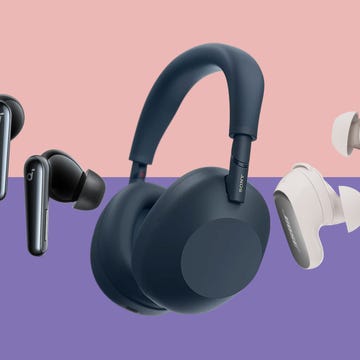
Best noise-cancelling headphones

Best over-ear headphones to buy right now
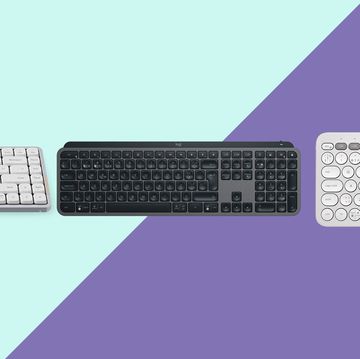
Best wireless keyboards for working from home

15 best laptop backpacks for keeping tech safe






